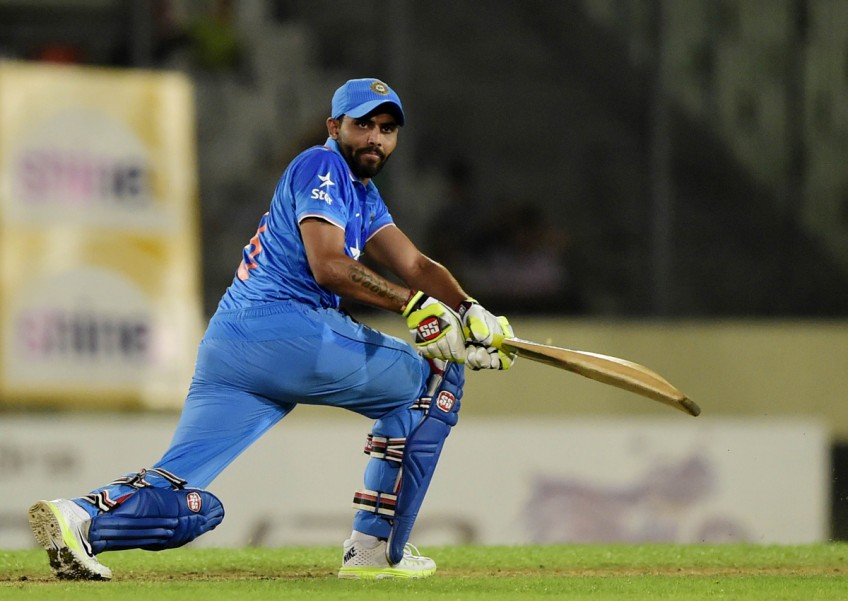In search of No. 7


Four Test matches against South Africa will whet the appetite of the traditionalists but a long season of limited overs cricket lies on either side of those, stretching all the way to the end of May. India's Test team, in home conditions, looks fairly settled but there are questions, many uncomfortable, around the composition of the limited overs team.
It shouldn't normally be that way at home but there is a sudden shortage of dual-skilled players and, while India overcame that scarcity gamely at the World Cup, they need to confront it again. India played conservative cricket in Australia and Mahendra Singh Dhoni admitted that he was always concerned by the batting inadequacies of No. 7 downwards. That was largely the product of Ravindra Jadeja, in the eyes of many the perfect bridge player between the batsmen and the tail, going through a career- threatening dip in form. And with Jadeja likely to be given time to overhaul himself, India's selectors will discover there aren't a lot of options.
Dhoni's reaction to the problem of this balance was to move himself up to No. 4 in Bangladesh in search of a stabilising role and look for someone else to, essentially, play himself at No. 6. I suspect he is aware that he isn't the finisher he was and so looked for Suresh Raina and Ambati Rayudu to do that. But teams in modern 50 overs cricket can no longer play with six batsmen. You might do that in a 240-250 game but where 300 is the new par, No. 7 has to bat, has to be good enough to come in during the 35th over and win a game.
In any case, most good limited overs sides have been built around a batting No. 7. Australia won the World Cup with either James Faulkner or Bradd Haddin in that role but their enviable balance was provided by Glenn Maxwell and Shane Watson just before them. India won in 2011 with Yusuf Pathan and then Raina batting there and in the phase between 2002 and 2006, when India were an excellent chasing side, No. 7 was often a pure batsman. Sri Lanka won in 1996 with seven batsmen too and Australia thereafter had the likes of Tom Moody in 1999, Andrew Symonds, Ian Harvey and others like him playing the dual role.
In each of these cases though, there has been a wicket keeper in the top six and a batsman, often two, who could, with help from No. 7, offer up to 12 overs to the captain. That is the kind of No. 7 India now seeks. A spin bowler in Indian conditions and a seamer when playing overseas. In the absence of Jadeja, it would seem that Axar Patel, who comes from the same manufacturing line, would be that player. He certainly bowled well for India "A" but hasn't yet convinced everyone that he can be the batsman he believes he is. India could well play him at seven but it could lead to a return of the conservative approach that Dhoni was concerned about at the World Cup.
The alternative is to look for a batsman who contributes a few overs and hope that a combination of him and Raina can play the fifth bowler. I believe that bowling side would still need help and that is why it is important that Rohit Sharma, and especially Virat Kohli, become good enough to offer a few overs in the middle of the innings. The "A" series - such a vital part of the calendar - has, I believe, thrown up a couple of batting options at No. 7. A left field view would be someone like Gurkeerat Mann who played a blinder to win India the final (87 from 85 balls but also 2-42 from 10 overs) of the tri-series against a good Australia "A" side.
The other, possibly stronger option, is to play Karun Nair in that position. He is a bold, aggressive strokeplayer and, like Mann and others of his generation, he is a very modern fielder. But, revealingly, in the tri-series bowled 31 overs at an economy rate of 4.5 in five matches, bowling more as the tournament progressed.
India will also be hoping that Mohammad Shami is making progress in his rehab from injury because the end overs bowling has been a bit hospitable in recent times. Bhuvaneshwar Kumar is becoming a go-to bowler in those situations but Mohit Sharma has blown hot and cold so the slower bowlers will need to offer more support. You don't always spend sleepless nights worrying about No. 7; those are often reserved for the specialists, but like the mid-fielder who is game to charge up and help the forwards and drop back to strengthen the defence, the bridge player in a limited overs side is crucial too. Currently, it is the position the selectors will spend maximum time debating over.

Get a copy of tabla! for more stories.